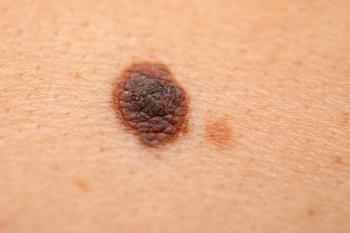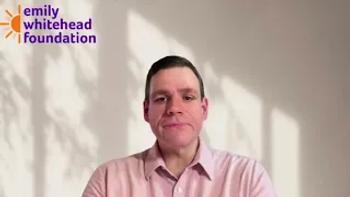
Prescription drug spending surges amid market forces
Factors include rising costs of brand medications, increased specialty therapy use
In 2014, the pharmacy landscape underwent a seismic change, and healthcare payers faced the highest annual increase in drug spending since 2003, according to the "
Prescription drug spending growth is projected to slow down to an average 6.3% annual growth from 2015 through 2024 because of improving economic conditions, changes in benefit management designed to encourage better drug adherence for people with chronic health conditions, and anticipated changing clinical guidelines designed to encourage drug therapies at earlier stages of treatment, according to the Centers for Medicare & Medicaid Services.
In looking at the recent surge in medication spending, many factors played a role, including prices escalating for brand medications and the ongoing increase in utilization of specialty therapies, including rapid uptake of new hepatitis C therapies and expensive compounded therapies, says Jonathan C. Roberts, president, CVS/Caremark, and executive vice president, CVS Health, Woonsocket, Rhode Island.
As a result of market forces, plan sponsors can no longer rely on the wave of less-expensive generics to control drug costs, according to the Express Scripts report. They need to act now to more tightly manage the benefit, implement smarter formularies, control the use of compounded medications, and offer clinical support to ensure that all patients are able to achieve the best health outcome possible.
Here’s a closer look at the forces behind the sharp rise in medication spending.
Increased spending on specialty medications
Specialty drugs are typically much more complex than conventional medicines such as pills and may require injection. FDA has significantly increased the number of specialty medications that it has approved in the last 10 years from six specialty drugs in 2005 to 27 drugs in 2014. “Because specialty drugs tend to cost considerably more than traditional drugs, the breakdown becomes significant,” says Benjamin Isgur, director, PwC Health Research Institute, New York, New York.
Specialty medicines now account for one-third of spending, according to the IMS report, despite representing only 1% of all U.S. prescriptions. And, spending on specialty medications more than doubled from 2013 to 2014 to an unprecedented 30.9%, according to the Express Scripts report.
Isgur says specialty drugs are addressing conditions that didn’t have good treatment regimens previously. “They are coming on market as researchers work to find cures and other benefits for patients who haven’t had them in the past,” he says.
Hepatitis C treatments are a good example. Since mid-2014, many options became available that cost more than $1,000 a pill, resulting in a full-course treatment that could cost $80,000 or more. “Despite the hefty price tag, the benefits seem quite high as patients are being cured or at least living greatly improved lives,” Isgur says.
Hepatitis C drugs accounted for 45% of the total increase in specialty spending, despite having the second-lowest prescription volume among the top 10 specialty conditions, according to the Express Scripts report. The United States spent nearly 743% more on hepatitis C medications in 2014 than in 2013.
More focus on orphan drugs
The majority of new drug launches are specialty pharmaceuticals that are increasingly targeting more common conditions. Such is the case with hepatitis C treatments that launched in 2014, which have a potential patient population in the millions, Roberts says. Another example is FDA’s approval and launch of new PCSK9-inhibitors in 2015, which are indicated for lowering low-density lipoprotein cholesterol in certain patient populations.
In addition to specialty drugs, pharmaceutical companies are launching orphan drugs to treat extremely rare conditions and diseases with very small, specific populations-typically only several thousand patients or fewer, according to the Express Scripts report. Orphan drugs are among the most expensive medications in the United States, often costing tens of thousands of dollars per prescription. According to the report, the high expense is warranted and necessary to fund manufacturer research and development costs for these and future medical breakthroughs that may not happen otherwise.
In the last five years, 61 orphan drugs were launched, the largest number in any five-year period since the passage of the Orphan Drug Act in 1983, according to the IMS report. Eighteen orphan drugs launched in 2014, including nine treatments called “ultra-orphan” drugs, for diseases afflicting fewer than 10,000 patients. Cancer remains the most common orphan category.
The reasoning behind the focus on orphan drugs is multi-fold. Historically, drug manufacturers’ business models focused on research and development of key drugs to treat common conditions that affected millions of patients. These branded medications became blockbusters because of the volume of patients treated and a high, but not exorbitant, price tag, according to the Express Scripts report. As a result of patent expirations, generic competition, and a withering pipeline of broad-reaching drugs, manufacturers are shifting their drug discovery, development, and pricing strategies. “Now, manufacturers are focused more on medications that treat a small number of patients with diseases such as cancer, or patients with rare diseases such as hereditary angioedema,” says Rochelle Henderson, senior director of research, Express Scripts, St. Louis, Missouri.
Manufacturers also are tailoring molecular drugs to patients with specific genetic profiles known to be affected by certain diseases, so the drugs are more effective in treating those specific patients. For example, Ruconest (C1 esterase inhibitor [recombinant]), approved in July 2014, treats adult and adolescent patients with hereditary angioedema, which affects fewer than 10,000 Americans. Another such drug, Cerdelga (eliglustat), offers an oral alternative to enzyme replacement therapy for adult patients with Gaucher disease type 1, an inherited lysosomal storage disorder that affects approximately 6,000 patients in the United States.
In addition, more than 1,000 targeted cancer treatments, many genetically guided, are in development. One such niche cancer drug is Keytruda (pembrolizumab), an immunotherapy approved in September 2014 to treat a small subpopulation of patients with certain genetic expressions of advanced, non-small cell lung cancer. “These drugs oftentimes have little or no competition and are often much more effective than the broader-spectrum drugs they are replacing as first or second-line treatments,” Henderson says. “Many have unprecedented costs, however, as pharmaceutical companies aim to maintain profit margins and recoup their investments in drug discovery.”
Isgur says the high price tag is also due, in part, to the fact that a smaller patient population take orphan drugs. “The cost is shared by a smaller number of patients,” he explains.
And although orphan drugs are expensive, there is a flipside. “By improving patients’ lives, keeping patients out of hospitals, and preventing procedures such as an organ transplant, there may be a cost savings,” Isgur points out.
New innovations in commonly used therapy classes
Spending on new brands increased dramatically in 2014 as new treatment options for hepatitis C, cancer, multiple sclerosis, and diabetes had stronger uptake than new medicines in prior years, according to the IMS report.
“But despite the recent focus on developing and promoting specialty medications, a considerable drug market for medications indicated to treat more common chronic conditions, such as high blood cholesterol and diabetes, still exists,” Henderson says. Combined, these medications affect at least 19 million Americans.
Diabetes medications were the only non-specialty therapy class to have a significant increase in per-member-per-year (PMPY) drug spend in 2014, largely because of two newly approved drugs known as sodium-glucose co-transporter 2 inhibitors, or SGLT2 inhibitors, according to the Express Scripts report.
Inflation costs for compounded ingredients
In 2013 and 2014, spend for compound medications escalated rapidly. Compounded drugs now rank as the third most expensive therapy class on a PMPY basis, displacing high blood pressure medications, which had ranked among the top three most-expensive traditional therapy classes for at least a decade, according to the Express Scripts report.
Until the 1950s, most prescriptions were prepared using the compounding process, however mass pharmaceutical production replaced this method by the 1970s. The volume of compounded prescriptions continued to drop over time, representing less than 1% of all prescriptions by the early 2000s. Their share is similar today, according to the report.
Many factors play a role in the increases in cost and use of compounded medications. “Key reasons include changes in industry practices that make it easier to track medication costs, compounding pharmacies’ marketing and billing practices, physician prescribing, and patient demand,” Henderson says.
Fewer drugs shifted to generic offerings
In the past, drug spending decreased as more drugs had generic options become available. But in recent years, fewer drugs were offered as generics because fewer blockbuster drugs were coming off patent.
In addition, generic drug prices have increased, perhaps because fewer manufacturers are making generic drugs. In certain classes, only one or two manufacturers are making a drug. This is because manufacturers aren’t enticed to produce a product at a low price point, Isgur says. “If there is a problem with the supply pipeline, there can be a disruption of manufacturing which creates shortages and raises prices."
When pending patents expire and generic drugs become more available, pharmaceutical manufacturers often employ strategies to preserve their market share, including raising prices for their branded drugs, Roberts says. For CVS/Caremark PBM clients in 2014, price increases for branded drugs-for both non-specialty and specialty brands-contributed a combined 10.7% to drug trend, more than 50% of the total trend, he says.
According to the Express Scripts Prescription Price Index, which tracks the pricing for a market basket of the 80% most commonly used brand drugs and a separate basket for the 80% most commonly used generic drugs, average brand drug pricing more than doubled (up 127%) from 2008 to 2014, while average generic drug prices were cut in half (down 62%) during that same time period.
It’s also important to note that perhaps the most anticipated innovations in this category were generic versions of biologic drugs, called biosimilars. This is because exact copies are not possible, the IMS Institute for Healthcare Informatics report states. The first biosimilar applications were filed in 2014, five years after legislation created the biosimilar pathway.
Governmental impacts
Various legislative and regulatory forces have also attributed to the increase in medication spending. Congressional legislation approved in 2012 granted new approval authorities to FDA, including the ability to expedite the development and review of drugs deemed “breakthrough therapies.”
In 2014, more than 40 breakthrough therapy designations were approved and 10 drugs with the designation were launched, making lifesaving drugs quickly available to the most vulnerable patient populations, according to the IMS report. Drugs deemed breakthroughs are often launched within a month of approval to provide new therapies to patient populations as quickly as possible. Seven of the 10 were orphan drugs, and the non-orphan drugs (meningitis vaccine, hepatitis C) serve large populations and provide cures for potentially fatal diseases, according to the report.
Also in 2014, states began to
With increasing access to prescription drug benefits under Medicaid and the ACA, there was a corresponding rise in prescription utilization, Roberts says. PMPY spend for Medicaid plans rose 10.2%, to $882.43 in 2014, primarily due to a 10.7% increase in unit cost, the Express Scripts report stated. Total traditional trend was 2.8%, reflecting a 0.5% decrease in utilization and a 3.2% increase in unit cost. Spend for traditional medications contributed 72.2% of total PMPY spend in 2014.
The largest impact on Medicaid in 2014 stemmed from the availability of new, high-priced hepatitis C therapies, Henderson says. Expensive hepatitis C drugs contributed significantly to a 35.8% increase in specialty drug spend in Medicaid. The 2014 specialty drug spend increase was three times the increase in specialty drug spend seen in 2013.
With more than 750,000, or almost one in four, Americans with chronic hepatitis C receiving state-funded healthcare through Medicaid or the prison system, the burden of paying for the cost of these hepatitis C treatment regimens falls disproportionately to state budgets, Henderson says. Given the prevalence of hepatitis C in the Medicaid population and the extreme cost, PMPY spend for this category among Medicaid plan sponsors rose 321.8% to $55.02-the largest drug trend for any single therapy class. In addition, spend for this therapy class was higher than that for all other specialty therapy classes, according to the Express Scripts report.
“As states continue to try to manage the cost of care for Medicaid, interest in the use of managed care remains high,” Henderson says. “Many states that chose Medicaid expansion had previously used some form of managed care to control the operational and medical costs of managing enrollee benefits.”
Karen Appold is a medical writer in Lehigh Valley, Pennsylvania.
Newsletter
Get the latest industry news, event updates, and more from Managed healthcare Executive.





















































